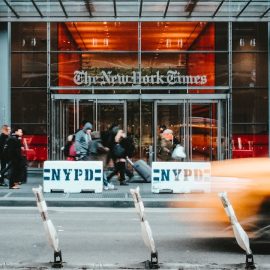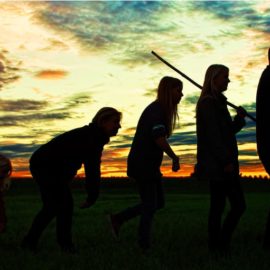
What causes entire generations to become less interested in civic life? How did major historical events and technological changes impact America’s social capital?
In his book Bowling Alone, Robert Putnam identifies generational attitudes as the primary driver behind America’s declining civic participation. The unique experiences of different generations created distinct perspectives on social responsibility.
Read on reading to see how these generational shifts occurred, why social capital flourished after World War II, and what patterns offer hope for rebuilding our connections.
Generational Attitudes & Social Capital
When adding up the different factors that might explain the US’s falling civic participation, Putnam suggests that the largest contributor of all is a sharp change in generational attitudes, stemming from the timing of geopolitical events and technological changes across the 20th century. On this point, Putnam takes care to distinguish between changes within generations that take place as a population ages and changes between generations that occur because of experiences one cohort shares that other generations do not. For instance, children of the 1950s and ’60s grew up in a time of rapid economic growth that wasn’t matched by the experiences of their parents or their children, who both grew up in times of economic turmoil.
Putnam states that approximately half of the US’s measurable decline in civic-focused behavior is the result of generational change. In other words, individuals don’t grow less invested in their communities. Instead, each generation is less civic-oriented than the one that came before. This, of course, raises the question: What’s happening to entire generations that’s making them lose interest in civic life? Putnam’s answer is twofold. One divide was TV; those who grew up before it were accustomed to more social participation in their lives. Putnam also argues that World War II constitutes another generational divide.
| Generational Cycles Putnam specifically discusses how the baby boom generation differs from those before and after, but without the standard generational labels that are commonly applied today. The Center for Generational Kinetics says that in general, the Silent generation was born before 1945, Generation X followed the boomers from roughly 1965-1976, Millennials came next (1977-1995), and Gen Z (1996 onward). A new label, Gen Alpha, has been proposed for children born after 2010. Each of these generations has gone through major world events and societal changes at different stages of life, such as the 9/11 terror attacks that briefly increased the US’s social cohesion, and the Covid-19 pandemic, with its negative impact on social capital and the institutions that create it. In The Fourth Turning, published shortly before Bowling Alone, William Strauss and Neil Howe present a theory of generational differences not tied to specific historical events that might help to explain the changes Putnam sees. Strauss and Howe see generations as cyclical, conforming to four archetypes—“prophets” born in times of plenty, “nomads” who grow estranged from society, “heroes” who come of age in times of unrest, and “artists” who create new social structures during and after a great crisis. Strauss and Howe equate these archetypes with the four post-World War II generations, tracking with the loss of trust in social institutions that Putnam describes. Their predictions for the crises that would shape the 21st century were eerily accurate, but they also offer hope that people will eventually come together, create new social norms, restore trust in institutions,and replenish the US’s social capital, as was done prior to 1945. |
The World War II Surplus of Social Capital
Instead of just dwelling on the loss of social capital in the century’s latter half, Putnam turns to the first half of the 20th century and asks what factors caused social capital to rise. He hypothesizes that world-shaking events united Americans for a common purpose more strongly than any crisis we’ve faced since—namely, the Great Depression and, to an even greater extent, the Second World War. The Depression made Americans work collectively through union-building and political action to carry each other through its economic hardships. World War II followed right on its heels, uniting the country to face a common enemy.
(Shortform note: It would be inaccurate to suggest that there was no divisiveness in the response to the Depression. In large part, the US’s recovery was driven by President Franklin D. Roosevelt’s economic agenda, referred to as the New Deal, which was met with significant public criticism. On one side, figures like Louisiana Governor Huey Long argued that the New Deal didn’t do enough to redistribute wealth to the nation’s poor. On the other side, Roosevelt’s opponents on the US Supreme Court worked to overturn several New Deal policies, including provisions of the newly created Social Security program. These individual challenges reflect larger social divisions of the time over how the Depression’s fallout should be addressed.)
More than any conflict since the American Revolution, World War II imbued the nation with feelings of social responsibility and civic duty—even those who didn’t fight on the battlefield did their part on the “homefront” to support the nation as a whole. This involved creating many social and community organizations, both locally and the national scale, to coordinate individual and neighborhood activities, such as collecting scrap metal and rubber, rationing supplies, and providing support for those who lost family members. Once the war was over, this sense of interpersonal camaraderie endured, defining the outlook of everyone who lived through it.
(Shortform note: World War II had other social impacts in the US beyond causing community organizations to flourish. For instance, the war brought women into the workforce to fill positions left vacant by men fighting overseas—positions that many didn’t want to leave once the war was over. Another change was that the war created economic and social mobility for African Americans. When the US curtailed racial discrimination in the war effort, African Americans were able to distinguish themselves through military service and on the home front, where they were able to find better work than before, breaking racial barriers in many industries.)
Putnam writes that the generations that followed had no such uniting force. Instead, the defining historical events of the following decades were more divisive, such as the Vietnam War and the Civil Rights Movement. While Americans united in support of these and other causes, many of their neighbors united in opposition, and though the social structures and organizations created during the prior decades persisted, their membership waned and steadily aged as younger generations turned inward with a focus on individual growth and success. Our modern era has experienced a much-needed growth of equality and opportunity, not to mention many technological marvels, but we’ve also lost our sense of common purpose.
(Shortform note: By focusing on the social divisions of the 1950s and ’60s, Putnam may be glossing over the divides of the previous decades. In A People’s History of the United States, Howard Zinn depicts these earlier divisions as a conflict between workers and wealthy elites. For instance, while the early 20th century’s labor movements brought people together for a common cause, they did so in defiance of traditional socioeconomic institutions. Likewise, public support for the World Wars was mixed—there was strong anti-war sentiment as well. While Zinn agrees with Putnam that the US public supported fighting in World War II, he writes that this was true only after the interests and sovereignty of American elites were threatened.)






